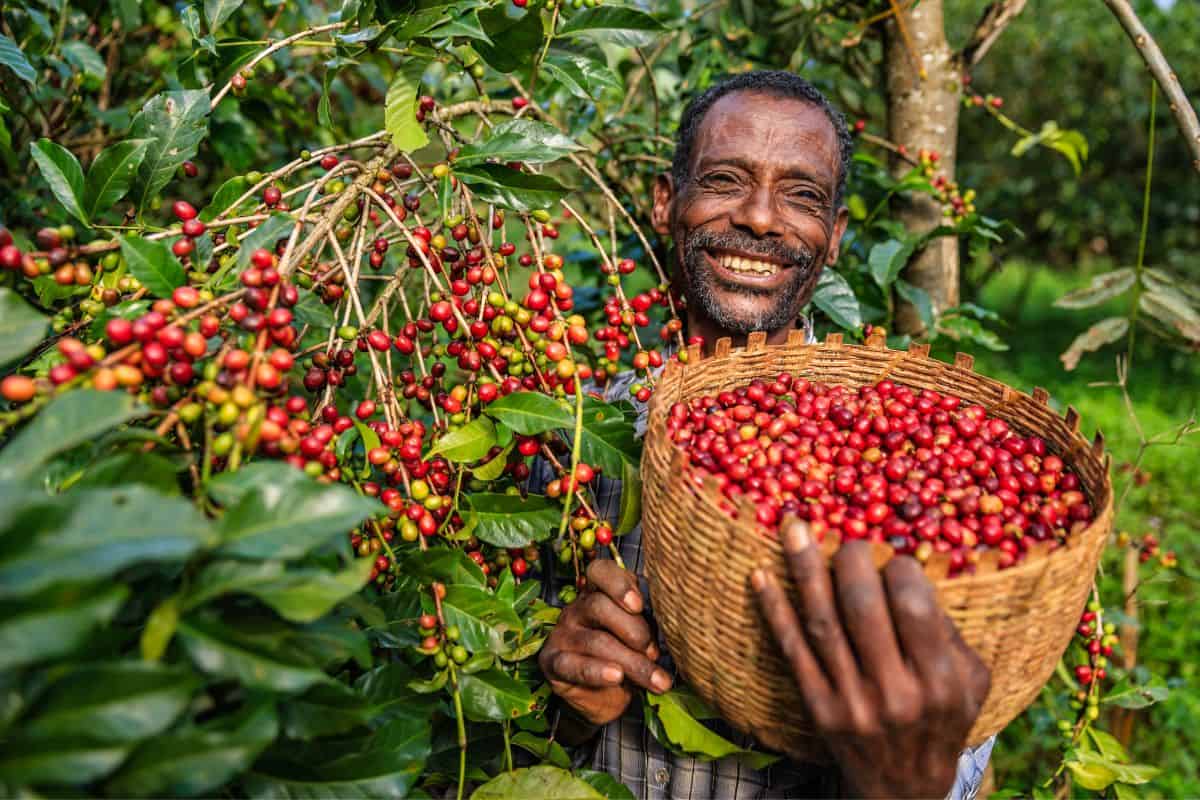Just so you know, as an Amazon Associate we earn from qualifying purchases made via bold red links, buttons or images.
Last Updated on December 17, 2023
Burundi is home to some of the best coffee beans in the world.
This small, landlocked African country in the Great Lakes region of East Africa has a unique climate and topography that is ideal for growing high-quality Arabica coffee beans. Burundi coffee is known for its complex flavor profile, often with notes of citrus, berry and chocolate.
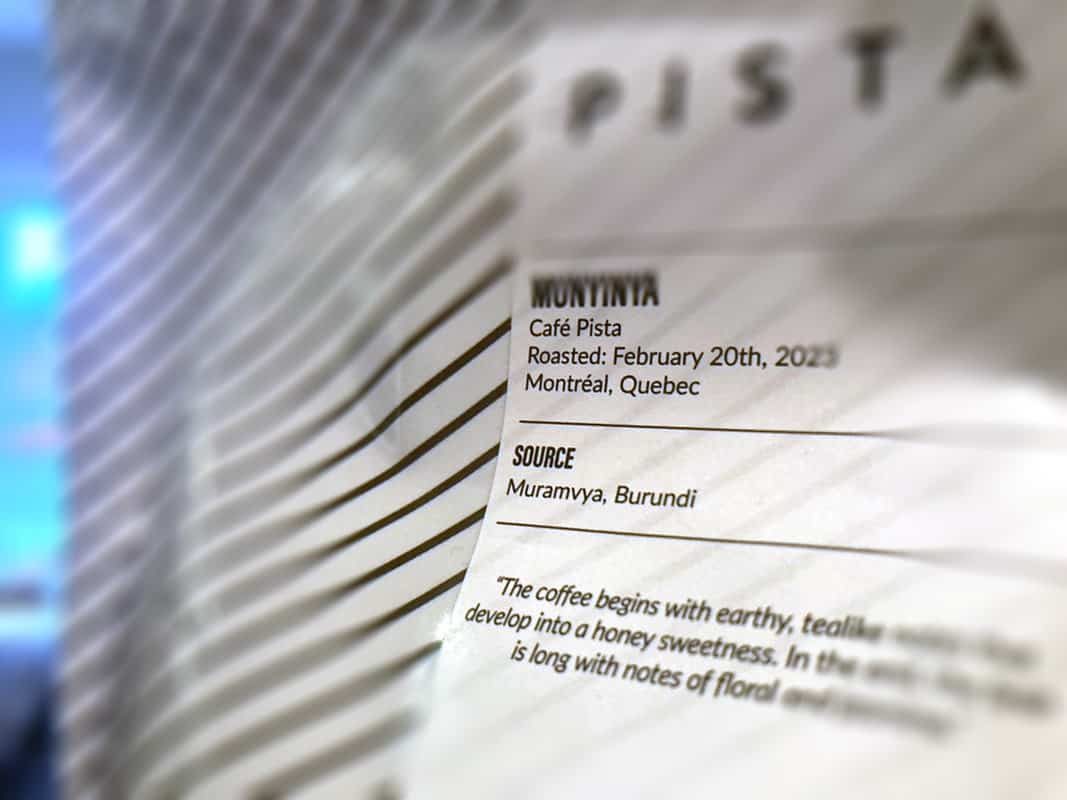
Burundi is bordered by Rwanda to the north, Tanzania to the east and south, and the Democratic Republic of Congo to the west. Despite being one of the smallest countries in Africa, it has a rich cultural heritage, with a diverse mix of ethnic groups and languages. It’s a mountainous country with abundant natural beauty that includes forests and a portion of Lake Tanganyika, one of the largest freshwater lakes in the world.
In recent years, the quality of Burundi coffee exports has gained significant recognition on the international stage.
Burundi Coffee History
Coffee has been an important crop in Burundi since the early 1900s, when it was introduced by Belgian colonial authorities. The country’s high altitude, rich volcanic soil, and tropical climate create ideal conditions for growing high-quality coffee, and it quickly became one of Burundi’s main exports.
During the colonial era, coffee production was controlled by a small group of European plantation owners, but after Burundi gained independence in 1962, the government began promoting small-scale coffee farming among the country’s rural population. Today the coffee industry is thriving, with coffee grown by over 800,000 smallholder farmers across the country.
Coffee Growing Regions in Burundi
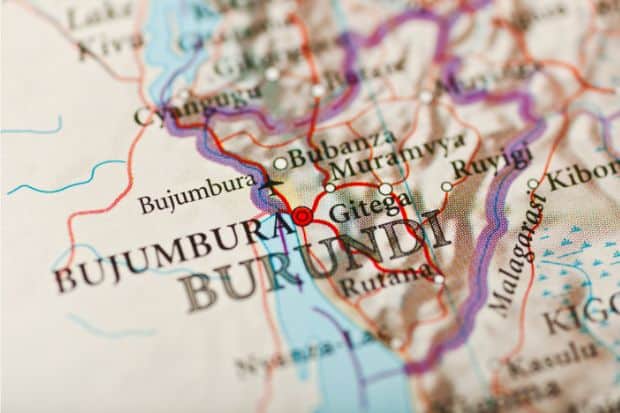
Burundi is home to several distinct coffee growing regions, each with its own unique characteristics and flavor profiles. Coffee cultivation typically takes place on the highlands surrounding Lake Tanganyika.
Kayanza Region
One of the most well-known coffee growing regions in Burundi is the Kayanza region, located in the northern part of the country. Kayanza is known for producing coffee with bright citrus notes and a medium body. The region’s volcanic soil, high altitude, and cool climate contribute to the coffee’s unique flavor profile.
https://m.media-amazon.com/images/I/51G8IYfuAcL._SL500_.jpg
Check availability
Ngozi Region
Another important coffee growing region in Burundi is the Ngozi region, located in the northwest. Ngozi is known for producing coffee with a complex flavor profile that includes notes of blueberry notes, spice, and chocolate. The region’s rich volcanic soil and high altitude contribute to the distinctive flavor.
Muyinga and Rutana Regions
Other coffee growing regions in Burundi include the Muyinga region, which is known for producing coffee with a sweet, nutty flavor, and the Rutana region, which produces coffee with delicate floral notes.
How Burundi Coffee Is Grown
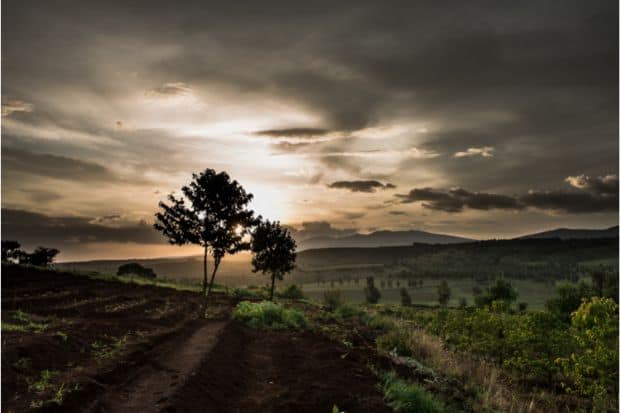
Burundian coffee is grown on small family-owned farms, typically located in the central and northern regions of the country. The coffee trees are grown at high elevations, ranging from 1,300 to 2,000 meters above sea level.
Coffee plants in Burundi are typically of the Bourbon variety, which is a high-quality Arabica coffee known for sweetness and fruitiness. The coffee farm will try to provide a semi-shaded environment to protect them from direct sunlight and provide a favorable microclimate for the coffee to grow.
Farmers in Burundi practice sustainable and organic farming methods, which involve using natural fertilizers and pest control methods. The coffee cherries are harvested by hand, and pickers select the ripest cherries to ensure the highest quality coffee beans.
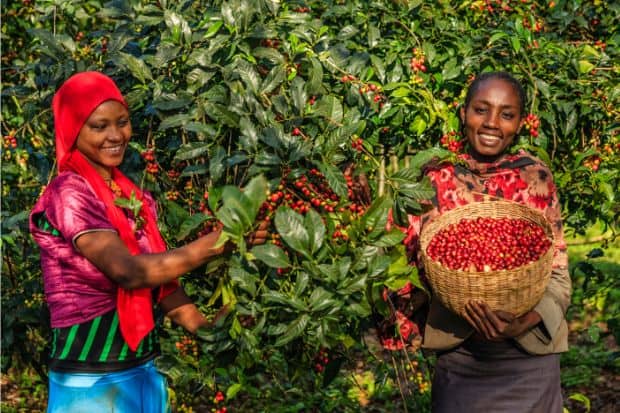
Once the coffee cherries are harvested, they typically undergo wet processing. This involves removing the outer layers of the coffee cherry to expose the coffee beans. The beans are then washed and dried to remove excess moisture, resulting in green coffee beans that are ready for roasting.
The coffee beans are typically roasted to a medium or medium-dark roast level to bring out the rich and complex flavors. The beans are then packaged and shipped to coffee roasters and distributors around the world.
Overall, the high altitude, favorable climate and sustainable farming practices contribute to the unique and high-quality flavor profile of Burundi coffee. Careful selection and processing of the coffee cherries ensure that only the highest quality beans are used.
Burundi Coffee and Wet Processing
Wet processing is the most common method of processing coffee in Burundi. It requires a significant amount of water and can be more labor-intensive than other processing methods. Despite these challenges, wet processing remains the popular choice as it allows farmers to produce coffee that is highly valued on the world market.
Here’s how wet processing works:
After the coffee cherries are harvested, they are sorted and washed to remove any debris or leaves. The cherries are then pulped to remove the outer layer and expose the coffee beans inside. Next, the beans are soaked in water to ferment for a period of time, usually between 12 and 48 hours. This fermentation process helps break down the remaining layers of the fruit and develop the coffee’s flavor profile.
When the fermentation process is complete, the beans go back to the washing stations to remove any remaining pulp or debris, and then dried on raised beds or concrete patios. This drying process can take anywhere from a few days to a few weeks, depending on the weather conditions. Once the beans are fully dried, they are sorted and graded based on their size, shape, and quality.
Brewing Burundi Coffee
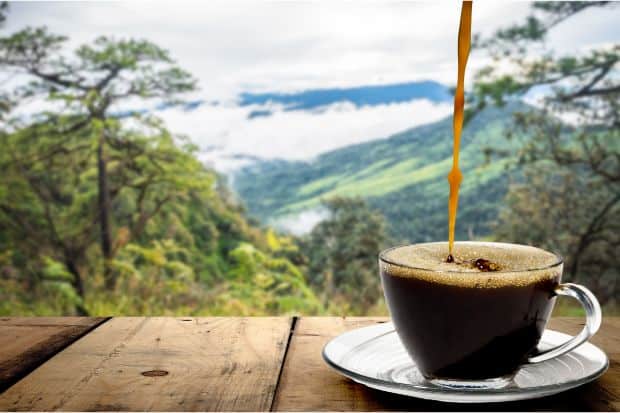
Popular brewing methods for Burundi coffee include pour-over, French press, and AeropPress. A pour-over method such as the Hario V60 can enhance the coffee’s acidity and bring out its fruity notes. A French press can bring out the coffee’s rich body and full flavor, while an AeroPress can accentuate the coffee’s complexity and balance.
Whatever brewing method you choose, it is recommended to use fresh, high-quality beans and grind them shortly before brewing.
Burundi Coffee and Food Pairings
If you’re like most people, you associate food and beverage pairings with seafood and white wine—steak with red wine, and so on. But did you know that food can also be paired with coffee?
Overall, Burundi coffee pairs well with a variety of sweet, fruity, spicy, and nutty flavors, making it a versatile and enjoyable coffee to pair with food.
Here are several suggestions to get you started:
- Chocolate: Burundi coffee has a sweet and chocolaty flavor profile, which makes it a great pairing with chocolate desserts such as brownies, chocolate cake, or chocolate truffles.
- Berries: The fruity notes and bright acidity of Burundi coffee pair well with the tart taste of fresh berries. Try pairing your coffee with a berry tart, mixed berry crumble, or a berry parfait.
- Spicy Foods: The complex and bold flavors in Burundi coffee make it a great pairing with spicy foods such as Indian curries, Thai stir-fries, or Mexican dishes. The coffee’s acidity helps to cut through the heat and balance out the flavors.
- Cheese: The nutty and sweet flavors in Burundi coffee pair well with a variety of cheeses, such as brie, Gouda, or blue cheese. Try pairing your coffee with a cheese plate or a grilled cheese sandwich for a delicious and comforting pairing.
- Roasted Nuts: The nutty flavor notes in Burundi coffee beans make it a great pairing with roasted nuts such as almonds, pecans, or hazelnuts. Try pairing your coffee with a nutty granola or a nutty chocolate bar for a delicious snack.
Don’t be afraid to experiment with various pairings to see what you like best.
With its nuanced flavors and complex notes, Burundi coffee is highly sought after by coffee lovers who appreciate the bright acidity and unique character of African coffees. Its flavor profile is characterized by bright, fruity notes that are perfectly balanced with a rich, full-bodied taste.
If you’re looking to explore the world of specialty coffee, Burundi coffee is definitely worth trying.

